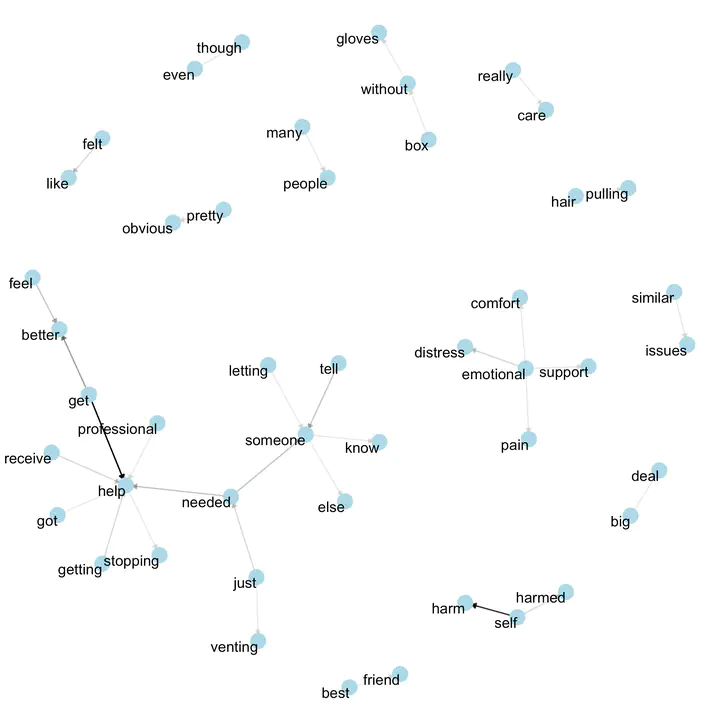 Bigrams of open-ended responses to an individual’s motivations to disclose their NSSI. Bigrams used at least twice by participants are shown. Bigram frequencies are shown by the shading of the connections and ranged from two (light grey) to 13 (black).
Bigrams of open-ended responses to an individual’s motivations to disclose their NSSI. Bigrams used at least twice by participants are shown. Bigram frequencies are shown by the shading of the connections and ranged from two (light grey) to 13 (black).Abstract
Objective: Despite nonsuicidal self-injury (NSSI) being a prevalent and problematic behavior, only approximately half of those who engage in NSSI disclose their behavior. Yet, limited research has explored the choice to disclose. This study sought to identify if NSSI characteristics, emotional distress, and perceived interpersonal obstacles discriminated between NSSI disclosure status. Exploratory aims also investigated reasons for one’s disclosure decision and disclosure contextual factors. Method: Participants included 977 undergraduate students (83% female) with a lifetime history of NSSI. Results: Greater NSSI intrapersonal functions, suicide risk, and significant other support, and lower depression symptoms were associated with NSSI disclosure. Exploratory results highlight perceptions of one’s NSSI severity and desire to receive support in disclosure choice; intrapersonal functions and peer support were associated with timing of disclosure. Conclusions: Findings underscore the potential importance of individual attitudes toward NSSI, in addition to traditionally measured risk factors, as potential drivers in NSSI disclosure.